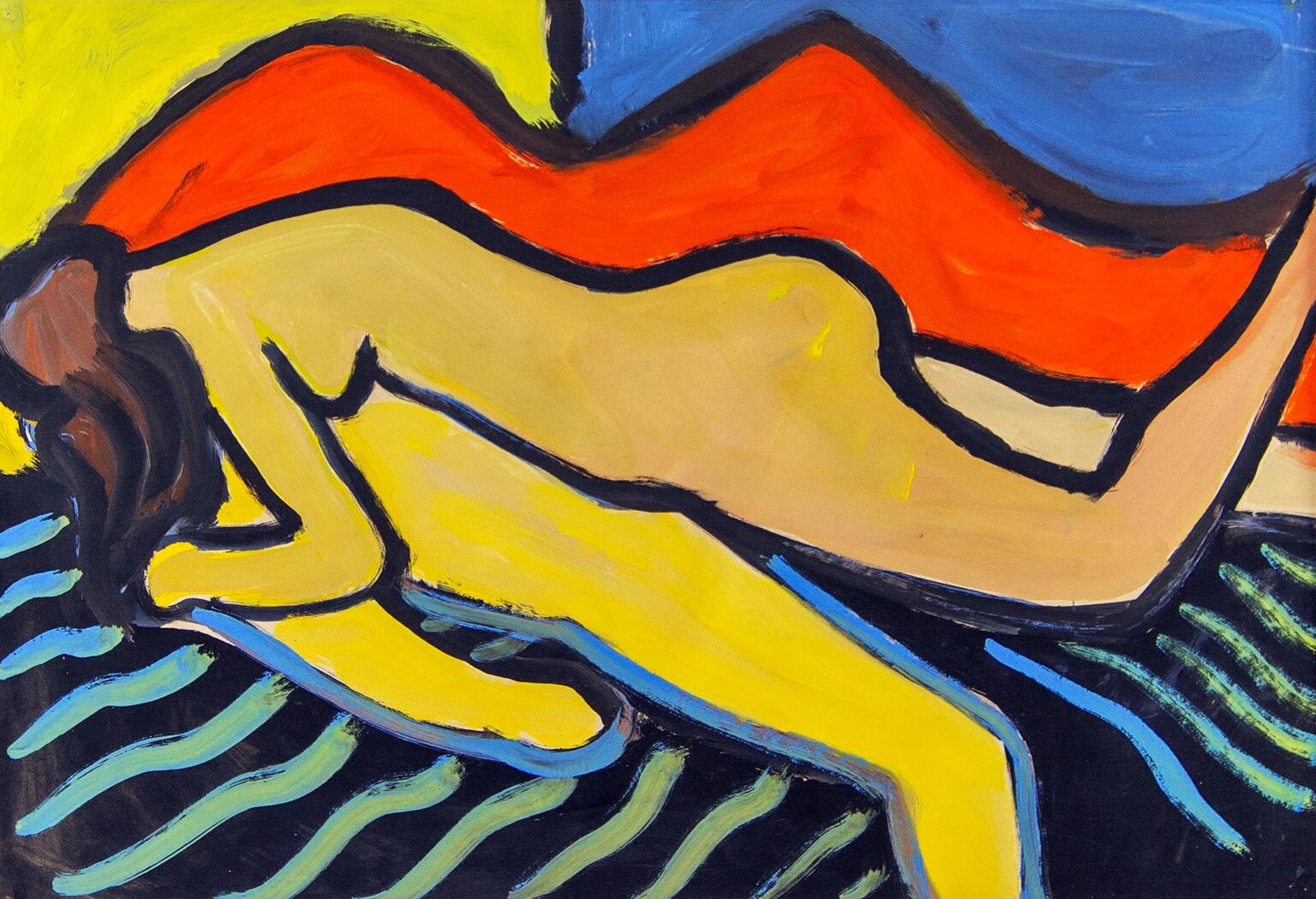
With Come Together, Miklós Németh updates the classical nude within a flat interior scene. The background shows two walls—yellow on the left, blue on the right—forming a corner of the room; between them runs an orange, undulating shape as the backrest of a sofa. In the foreground a woman lies on a man. Both bodies are held by strong contours. The dark areas with rhythmic stripes mark the reclining surface.
The chromatic and formal solution ties back to Fauvism: saturated primary and complementary fields, minimal modelling, contour as a structural armature. Clear affinities point to Henri Matisse—The Pink Nude (1935), Nude with Palms (1936), Red Interior: Still Life on a Blue Table (1947), Pink Nude, Red Interior (1947) and The Cat with Red Fish (1914). As in those works, colour plates organise the space; the figures are set rather than modelled.
At the same time Németh renders the scene more poster-like: the crisp sofa back, the suppressed depth and the sharply divided colour areas recall Tom Wesselmann’s early Pop phase—such as Judy Trying on Clothes (1960)—where nude and interior appear as flat, stencil-like colour blocks. Unlike Wesselmann, however, Németh leaves the brushmark visible and the contour painterly and weighty—a Pop accent on a Fauvist basis.
Compared with Matisse, Németh is less ornamental; compared with Wesselmann, more painterly and bodily immediate. Come Together unites Fauvist principles—colour carries form, space remains flat—with a Pop-tinged, pointed contour. The result is a neo-Fauvist figuration: luminous, direct, poster-clear.
The title provides the résumé: Come Together names the meeting of two bodies and, at the same time, a compositionally self-contained solution in which contour, colour fields and forms interlock so that the room corner at the centre does not pull the gaze into depth but is caught by contour and colour; no vanishing point emerges, the unity holds.